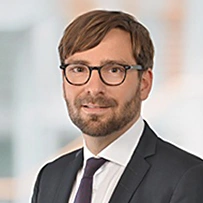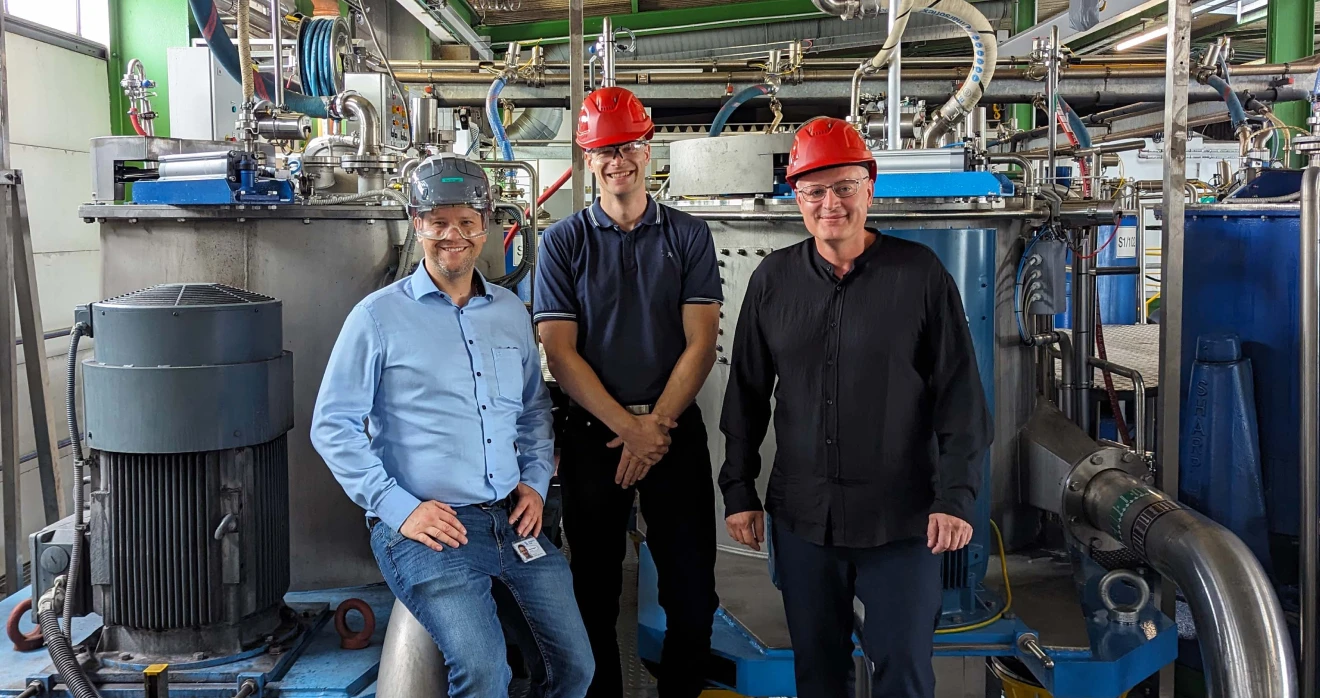Fresenius manufactures medical products and operates healthcare facilities, which inevitably results in energy consumption and associated greenhouse gas emissions. In production, for example, the machines and containers have to be sterilized regularly, and in our hospitals a wide variety of technical systems are in constant operation. This presents us with special challenges: On the one hand, we want to consume as little energy as possible, but on the other hand, we must guarantee the safety of the patients in our facilities at all times and ensure a stable supply of energy in our production.
Weather extremes caused by climate change are already affecting the working and living conditions of our employees and patients. We are acting now and taking measures both to prepare for these risks and to counteract climate change.
Our climate protection targets
Our climate targets
- Target by 2030: a 50% absolute reduction of our total Scope 1 and 2 emissions (base year: 2020)
- Target by 2040: climate neutrality in Scopes 1 and 2
- Target by 2050: net zero emissions in Scopes 1, 2, and 3
Scope 1 comprises direct emissions that we cause through our own business activities. Scope 2 relates to indirect, energy-related emissions that are caused by the consumption of purchased energy. Scope 3 covers other indirect emissions from our value chain.
Details on our goals can be found under Our sustainability ambition.
We want to live up to our responsibilities and help achieve the goal of the Paris Climate Agreement: Our climate targets aim to limit global warming to 1.5 °C. All our climate protection activities contribute to our long-term objective of attaining net zero by 2050: This requires a company to reduce its avoidable greenhouse gas emissions, while unavoidable emissions must be offset by removing an equivalent amount of CO2 from the atmosphere and storing it for the long term.
Scope 3 emissions are a decisive factor on our path to net zero. They include greenhouse gases that we release indirectly in our upstream and downstream value chains – such as when we purchase raw materials or at the end of the life cycle of the products that we sell.

Axel Faupel
Head of Sustainability Fresenius Kabi & Group Sustainability Strategy
“Around 88% of our emissions are generated in our value chain. If we want to achieve our long-term climate targets, we must also effectively reduce these emissions in the future. Collaboration with partners and stakeholders in the healthcare industry is an essential step in this direction.”
Pulling the right levers – effective decarbonization at Fresenius
We have identified the most important levers that will help us achieve our climate targets. These focus on the use of renewable energies, improving energy efficiency, and optimizing production technologies.
Decarbonization levers
Using renewable energy to a greater extent
The energy we use to generate electricity causes greenhouse gas emissions. However, electricity from renewable sources such as hydro, solar, and wind power causes significantly lower greenhouse gas emissions than fossil energy sources. Since the source of our electricity is crucial to reaching our climate targets, we strive to source it from renewable sources wherever possible. We also generate our own electricity, for example from biomass obtained from renewable raw materials such as wood chips and pellets. Photovoltaic systems at various production and hospital sites serve to supplement our electricity generation. By 2030, we aim to obtain as much of our electricity as possible from renewable sources.
Reliably supplied with power day and night
Energy is indispensable for our products and services – and it is vital for our patients. In all our efforts to save energy, we never lose sight of their safety. To ensure an uninterrupted energy supply for direct patient care at all times, all our hospitals in Germany and Spain have emergency power systems: In the event of a power failure, they ensure the continued operation of important devices and systems within a matter of seconds.
Clever use of energy
We want to maximize efficiency in all areas. In our buildings and processes, we focus on renewing our infrastructure by constantly optimizing the energy consumption of heating, ventilation, and air conditioning (HVAC) systems and replacing old components with more efficient units.
In production, we reduce energy consumption by various means. We renew technology and pumps, prevent leaks, and additionally insulate pipes and valves. We use steam, for instance, to sterilize pipelines and equipment in the production of medicines, since heat reliably kills germs. We then reuse the condensate.
Linz: utilizing braking energy from centrifuges
Our production site in Linz extracts the active ingredient lactulose for laxatives. Lactose (milk sugar) is separated from the original lactulose solution by centrifuges. The subsequent deceleration process generates energy that is converted entirely into heat but has not yet been utilized. The team in Linz is setting out to change this. The idea: a technical solution that allows the braking energy of one centrifuge to be used to accelerate another. The potential savings in the plant’s total electricity consumption with this method amount to as much as 125,000 kWh per year.

Taking a different approach to fuels, technology, and processes
We aim to gradually phase out fossil fuels by replacing them with renewable alternatives and are also looking into the use of new technologies such as hydrogen and industrial heat pumps.
In our hospitals, we give great attention to the anesthetic gases used in operating theaters, which are released into the outside air via the exhaust air system – where they are more harmful to the climate than CO2. They account for a relevant proportion of a clinic’s greenhouse gas emissions. In our hospitals, we are therefore gradually replacing anesthetic gases detrimental to the climate with more environmentally friendly alternatives or are recycling them.
Friedberg: Rethinking heating processes
At the Friedberg site, we currently use natural gas to heat the production building. To reduce the associated CO2 emissions, an alternative method has been developed that reuses heat from the production process. The heating system is supplied with waste heat from the return flow of the cooling water, and the additional heat required is generated by a heat pump powered by green electricity. Implementation is planned for 2025.
Estimated savings per year:
- 1,118,000 kWh of gas
- 200 tons of CO2 emissions
- 1,600 m3 of water
Charging instead of refueling
We are shifting gears on climate protection in our vehicle fleet and also offer electric company cars. We are also replacing some of the vehicles in our company transport fleet with electrically powered alternatives. In addition, we want to promote e-mobility right on our own doorstep by installing charging points at more and more locations for employees’ private cars. This is another way we can help reduce emissions and come closer to reaching our climate targets.

Climate protection means health protection
We are aware that climate change requires swift and decisive action. Its impact on our health is already being felt in our everyday lives: Heatwaves can be highly detrimental or even life-threatening to elderly and sick people. That is why our public hospitals in Spain receive alerts from the health authorities when temperatures reach certain levels.
Prolonged periods without rain leave pollutants such as particulate matter in the air, which can cause or aggravate respiratory diseases. Moreover, some insects benefit from the changes in weather and climate and now inhabit more regions than before; the viruses they may carry can cause infectious diseases to spread further. Prevention and treatment of climate-related diseases are therefore essential for us. With our medical care, we are thus also facilitating adaptation to climate change.

